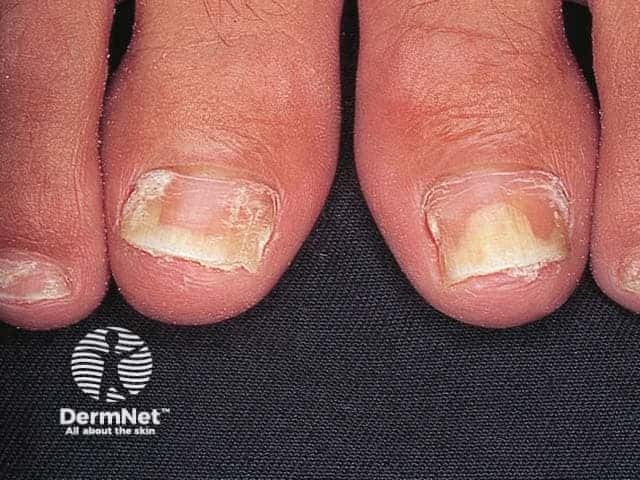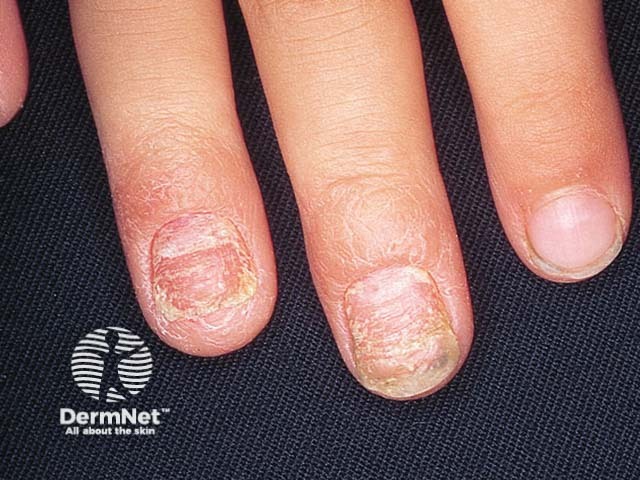Main menu
Common skin conditions

NEWS
Join DermNet PRO
Read more
Quick links
Mixed diagnoses – 10 cases (6 of 11)
For each of the ten cases, study the image(s) and then answer the questions. You can click on the image to view a larger version if required.
Each case should take approximately five minutes to complete. There is a list of suggested further reading material at the end of the quiz.
When you finish the quiz, you can download a certificate.
Case 6


For each child, describe the nail appearance.
Toenails: Both great toenails have distal onycholysis, with lateral onycholysis evident on the right. There is mild subungual hyperkeratosis. There is brownish discolouration of the nail bed (the oil drop sign). There is no paronychial inflammation. Fingernails: The third and fourth fingernails are ridged, pitted and discoloured.
Where else should you examine and why?
Besides looking at every nail, check the entire skin carefully. Although there has been no history of skin disease, careful examination may reveal intergluteal or umbilical reddening, scaling ears, dryness of elbows or typical plaques of psoriasis.
What results would you expect from laboratory examination of nail clippings?
As the children have psoriatic nail dystrophy, microbiological examination is expected to be negative. However, secondary infection with dermatophytes, yeasts, pseudomonas and other organisms frequently occurs so mycology should always be performed.
How would you treat the nails?
Concomitant dermatophyte or yeast infection should be treated with a full 3-month course of oral antifungal agents (terbinafine 250 mg daily or itraconazole 200 mg daily or as three 7-day pulses). The appearance of the nails is only likely to improve with this treatment if fungal infection is the cause. Nail psoriasis is notoriously difficult to treat but often improves slowly spontaneously. Twice daily applications of clobetasol propionate lotion or calcipotriol solution for at least twelve months may be worthwhile. Intralesional steroid injection is reputedly helpful but usually rejected by the patient because it is very painful. Nail psoriasis does improve with prolonged systemic antipsoriatic therapy, but this is rarely prescribed for this indication alone.
